Discover 6 hidden attractions, cool sights, and unusual things to do in Democratic Republic of the Congo. Don't miss out on these must-see attractions: Mount Mikeno (Virunga National Park), Mount Nyiragongo (Virunga National Park) or National Museum of the Democratic Republic of Congo (Kinshasa).
Below, you can find the list of the most amazing places you should visit in Democratic Republic of the Congo.
Table of Contents
Mount Mikeno, Virunga National Park
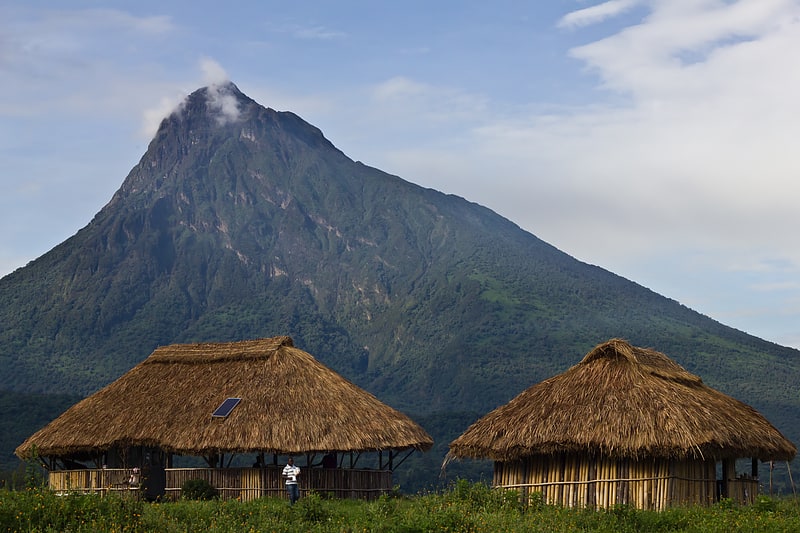
Also known as: Mont Mikeno
Mountain in the Democratic Republic of the Congo. Mount Mikeno is an extinct volcanic mountain located in the Democratic Republic of the Congo section of the Virunga Mountains along with Mount Nyiragongo, Mount Nyamuragira, Mount Karisimbi, Mount Bisoke and Mount Sabyinyo. At 4,437 metres Mount Mikeno is the second highest peak in the Virunga Mountains after Karisimbi, and the 13th highest mountain of Africa. Mikeno means "poor" and is so named for its harsh slopes which preclude human habitation.
Mount Mikeno lies completely within Virunga National Park and is known for the critically endangered mountain gorillas that live on its slopes. Expeditions to observe Mikeno's gorillas typically leave from the nearby Bukima Patrol Post.[1]
Mount Nyiragongo, Virunga National Park

Also known as: Nyiragongo
Stratovolcano in the Democratic Republic of the Congo. Mount Nyiragongo is an active stratovolcano with an elevation of 3,470 m in the Virunga Mountains associated with the Albertine Rift. It is located inside Virunga National Park, in the Democratic Republic of the Congo, about 12 km north of the town of Goma and Lake Kivu and just east of the border with Rwanda. The main crater is about two kilometres wide and usually contains a lava lake. The crater presently has two distinct cooled lava benches within the crater walls – one at about 3,175 m and a lower one at about 2,975 m.
Nyiragongo's lava lake has at times been the most voluminous known lava lake in recent history. The depth of the lava lake varies considerably. A maximum elevation of the lava lake was recorded at about 3,250 m (10,660 ft) prior to the January 1977 eruption – a lake depth of about 600 m (2,000 ft). Following the January 2002 eruption, the lava lake was recorded at a low of about 2,600 m (8,500 ft), or 900 m (3,000 ft) below the rim. The level has gradually risen since then. Nyiragongo and nearby Nyamuragira are together responsible for 40 per cent of Africa's historical volcanic eruptions.[2]
National Museum of the Democratic Republic of Congo, Kinshasa
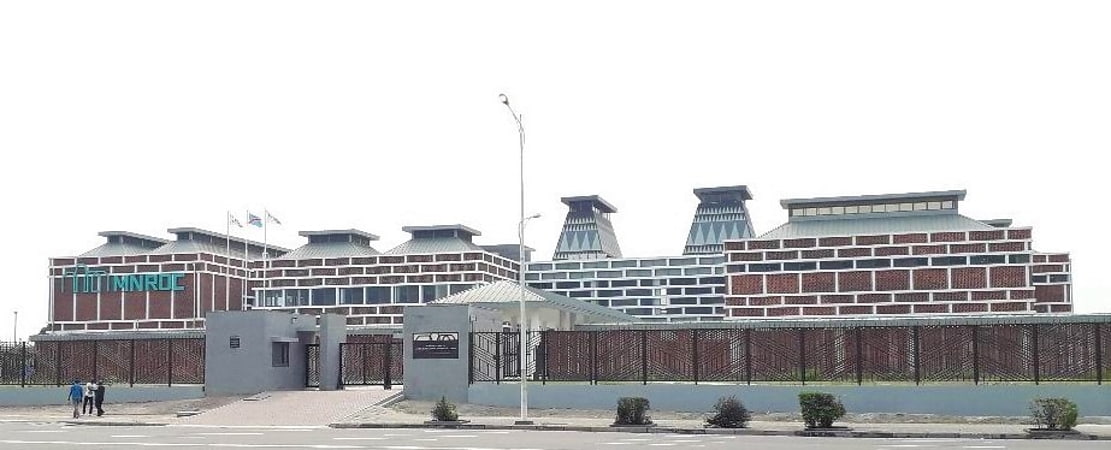
The National Museum of the Democratic Republic of Congo or MNRDC is a museum for the cultural history of the numerous ethnic groups and historical epochs of the Democratic Republic of the Congo in the capital Kinshasa. It was officially handed over to the Congolese government by representatives of the Republic of Korea in June 2019.
The construction cost of US-$21 million was funded by the Korean Agency for Cooperation (KOICA). The building was built after a construction period of 33 months in cooperation between experts of the DR Congo and the Republic of Korea under modern aspects (locally available construction materials, use of solar energy, natural air circulation with only partial use of air conditioning, etc.) and represents the largest cultural policy investment of South Korea in Central Africa to date.
In three public exhibition halls of 6,000 m2, 12,000 objects can be presented in their cultural context. The majority of the holdings of the National Institute of Museums (Institut des Musées Nationaux du Congo), however, must be stored in depots. Unlike in the past, when the director and scientific cooperation had been provided for decades by Belgian scientists from the Africa Museum in Brussels, Congolese experts have now been trained in South Korea. Thus, the Congolese cultural politicians have put their international cooperation on a broader basis than before.
The museum was opened to the public on 23 November 2019 by the President of the DR Congo, Félix Tshisekedi. Referring to requests for the resitution of African cultural heritage from museums in Europe, Tshisekedi said: "We support the return of the scattered cultural heritage, especially in Belgium. The idea is there, but it needs to be done gradually. Of course it is a Congolese heritage, one day it will be necessary that this heritage is returned, but it has to be done in an organized way. It requires means for the upkeep. One thing is to ask for their return, but another is to conserve it."[3]
Nyamuragira, Virunga National Park
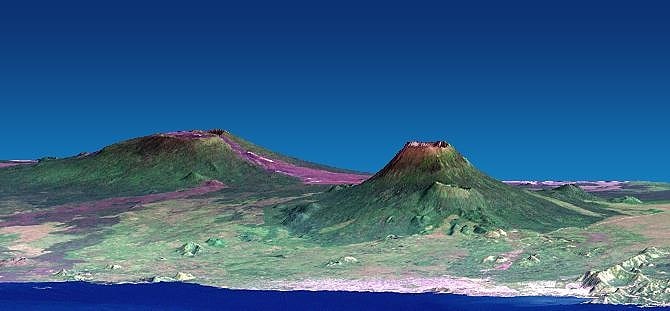
Shield volcano in the Democratic Republic of the Congo. Nyamuragira, also known as Nyamulagira, is an active shield volcano in the Virunga Mountains of the Democratic Republic of the Congo, situated about 25 kilometres north of Lake Kivu. The name is derived from the Bantu verb Kuragira nyamu, meaning to herd animals; nyamu means animal or cows.
It has been described as Africa's most active volcano and has erupted over 40 times since 1885. As well as eruptions from the summit, there have been numerous eruptions from the flanks of the volcano, creating new smaller volcanoes that have lasted only for a short time (e.g. Murara from late 1976 to 1977).
Recent eruptions occurred on 2 January 2010 and 8 November 2011.[4]
Lola ya Bonobo, Kinshasa
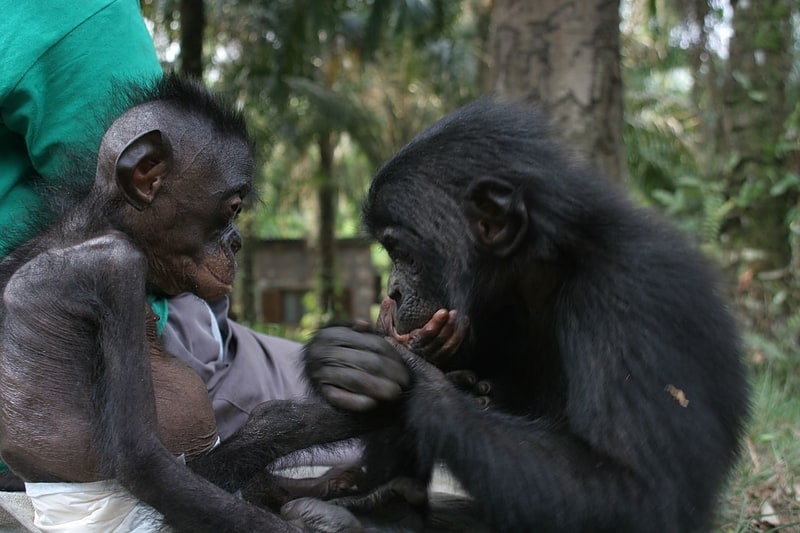
Animal park in Kinshasa, Democratic Republic of the Congo. Founded by Claudine André in 1994, Lola ya Bonobo is the world's only sanctuary for orphaned bonobos. Since 2002, the sanctuary has been located just south of the suburb of Kimwenza at the Petites Chutes de la Lukaya, Kinshasa, in the Democratic Republic of the Congo.
Lola ya Bonobo means 'paradise for bonobos' in Lingala, the main language of Kinshasa. Lola ya Bonobo is home to about 60 bonobos who live in 30 hectares of primary forest.
Lola ya Bonobo is a member of the Pan African Sanctuary Alliance.
Typically, bonobos arrive as young infants. The bushmeat trade in the Congo area sees hundreds of bonobos killed each year for meat. The infants are sold as pets. When confiscated, these young bonobos are taken to Lola ya Bonobo. They start a new life at the sanctuary with close care from a substitute human mother, but are usually quickly ready to be integrated into a peer group, and shortly afterwards into one of the large, mixed-age social groups.
Although the bonobos are captive, they live in an environment similar to the wild. They can forage among dozens of edible plants and fruiting trees, compete for mating opportunities, and learn to avoid dangers such as stepping on venomous snakes just as they would in the wild. As a result, the bonobos at the Lola ya Bonobo sanctuary, living in their forested microcosm, show all the naturally occurring behaviors observed in wild bonobos.
Because of the living conditions provided, the sanctuary can play a critical role by demonstrating the level of humane treatment that captive apes deserve. The sanctuary also protects wild bonobos since it triggers the enforcement of domestic and international conservation laws aimed at preventing the trade in live bonobos. The sanctuary also acts as a mouthpiece for conservation efforts in DRC by educating thousands of Congolese visitors each year about the value of Congo's natural history, in particular the bonobo – their unique Congolese inheritance.[5]
Académie des Beaux-Arts, Kinshasa
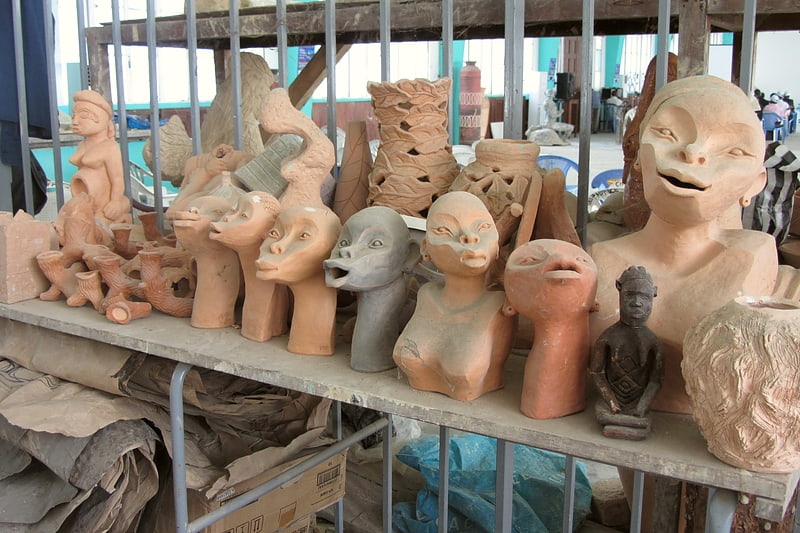
Also known as: Académie des beaux-arts de Kinshasa
School in Kinshasa, Democratic Republic of the Congo. The Académie des Beaux-Arts is a school in Kinshasa, Democratic Republic of the Congo. The school is devoted to teaching the arts, and was founded in 1943 as the École Saint-Luc à Gombe Matadi by Belgian catholic missionary Marc Wallenda. In 1949 the school moved to present-day Kinshasa and in 1957 it was renamed as the Académie des Beaux-Arts. During the education reforms of 1981 the school was integrated into the national technical university system.
The school offers programs in metalworking, interior decorating, visual communications, sculpture, painting, et cetera.[6]
Address: 8249, Avenue du 24 novembre, Gombe, Kinshasa, République Démocratique du Congo, Kinshasa